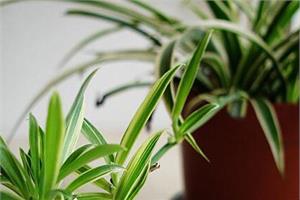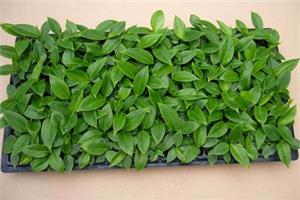What matters should be paid attention to in how to cultivate velvet taro?
Velvet taro is a kind of foliage plant with high ornamental value, and many owners like to raise it at home. We will also see velvet taro in some public places with green and dark green stripes like a zebra. Next, the editor will tell you how we should breed in our daily life. What matters need to be paid attention to in breeding.
Velvet taro
The best breeding time: the reproduction of velvet is usually carried out in April to May in spring or at the end of autumn combined with changing pots.
The best growing soil: the best growing soil for velvet is rotten leaf soil or peat soil with fertile and well drained water.
Growth humidity requirements: velvet growth period requires high air humidity, preferably above 80%, spray several times in the morning and evening, but the basin soil should not be too wet, otherwise it is easy to hurt the root.
The optimum growth temperature of velvet taro was 18: 25 ℃, 21: 27 ℃ from March to September and 18: 21 ℃ from September to March of the following year. The temperature is not lower than 13 ℃ in winter and more than 35 ℃ in summer, otherwise it is very disadvantageous to the growth of velvet taro, which will stop the growth of stems and leaves or die by freezing.
The best growth light: the light should not be too strong, the summer should be slightly shaded, the semi-shady environment is better, and the leaf color is fresh.
Matters needing attention in culturing goose down:
Watering points: goose down is very sensitive to moisture. During the growing season, the basin should be fully watered to keep the basin soil moist. But if the soil is too wet, it will cause root rot and even death, which should be paid special attention to.
At the same time, if the air humidity is small, the leaves immediately curl, the response is very sensitive. For indoor cultivation, the air humidity must be kept at 70%-80%. Keep a little dry in winter, the over-wet leaves are easy to turn yellow and wilt.

Apply fertilizer: fertilize once every semimonthly during the growing period, and add phosphate fertilizer appropriately.
Replacement of basin soil: the basin of velvet is changed every autumn, and the basin soil can be mixed with culture soil, peat soil and coarse sand.
Main points of reproduction: velvet is mainly propagated by plant division method and tissue culture method.
The plants with vigorous growth can be divided into plants once every two years, and when the ramet is changed, it should not be planted too deep, and all the roots can be planted in the soil, otherwise the growth of new buds will be affected. Tissue culture is generally used in large-scale propagation.
1. Ramet propagation: changing pots from April to May in spring or at the end of autumn. During the operation, the overdense plants are pulled out of the pot, the robust and neat plants are separated, potted separately, fully watered, and maintained in a semi-shady place. However, the root is easy to be hurt at low temperature in early spring, which affects the survival rate. In general, ramet should not be too early, and it is more appropriate to do ramet when the temperature is relatively stable. There should be more than 3-4 small plants per plant, and a certain amount of original soil should be retained as far as possible so as not to affect the growth and formation of the plant. When planting, the culture soil was composed of loose rotten leaf soil or peat soil plus 1 peat 3 perlite and a small amount of sand.
2. Tissue culture propagation: the petioles of tender stems or unspreading leaves are often used as explants. After routine disinfection, the petiole was cut into 3 mm segments and the tender stem was cut into 3 mm segments under sterile conditions. The petioles were inoculated on MS medium supplemented with 5mg / L 6-BA and 0.02mg / L naphthalene acetic acid to induce the formation of callus and adventitious buds. Adventitious buds could differentiate adventitious roots on MS 0.5mg / L naphthalene acetic acid medium. The rooting seedlings were transplanted in the medium of peat and perlite, the air humidity was kept high, and the survival rate was more than 95%.
Pest control:
The main hazards of goose down are leaf spot and leaf blight, which can be prevented by spraying Bordeaux liquid with lime equivalent.
The main pests of goose down are whitefly, which can be sprayed with 1000 times of imidophos EC.
The above is the relevant introduction of this article, I believe you have a simple understanding of this after reading it, if necessary, you can continue to pay attention to the No. 1 home network for more information.
Related
- Wuhan Hospital Iron Tree Blooming Result Was Instantly Frightened by the Gardener Master
- Which variety of camellia is the most fragrant and best? Which one do you like best?
- What is the small blue coat, the breeding methods and matters needing attention of the succulent plant
- Dormancy time and maintenance management of succulent plants during dormancy
- Minas succulent how to raise, Minas succulent plant pictures
- What are the varieties of winter succulent plants
- How to raise succulent plants in twelve rolls? let's take a look at some experience of breeding twelve rolls.
- Attention should be paid to water control for succulent plants during dormant period (winter and summer)
- Watering experience of twelve rolls of succulent plants
- Techniques for fertilizing succulent plants. An article will let you know how to fertilize succulent plants.



